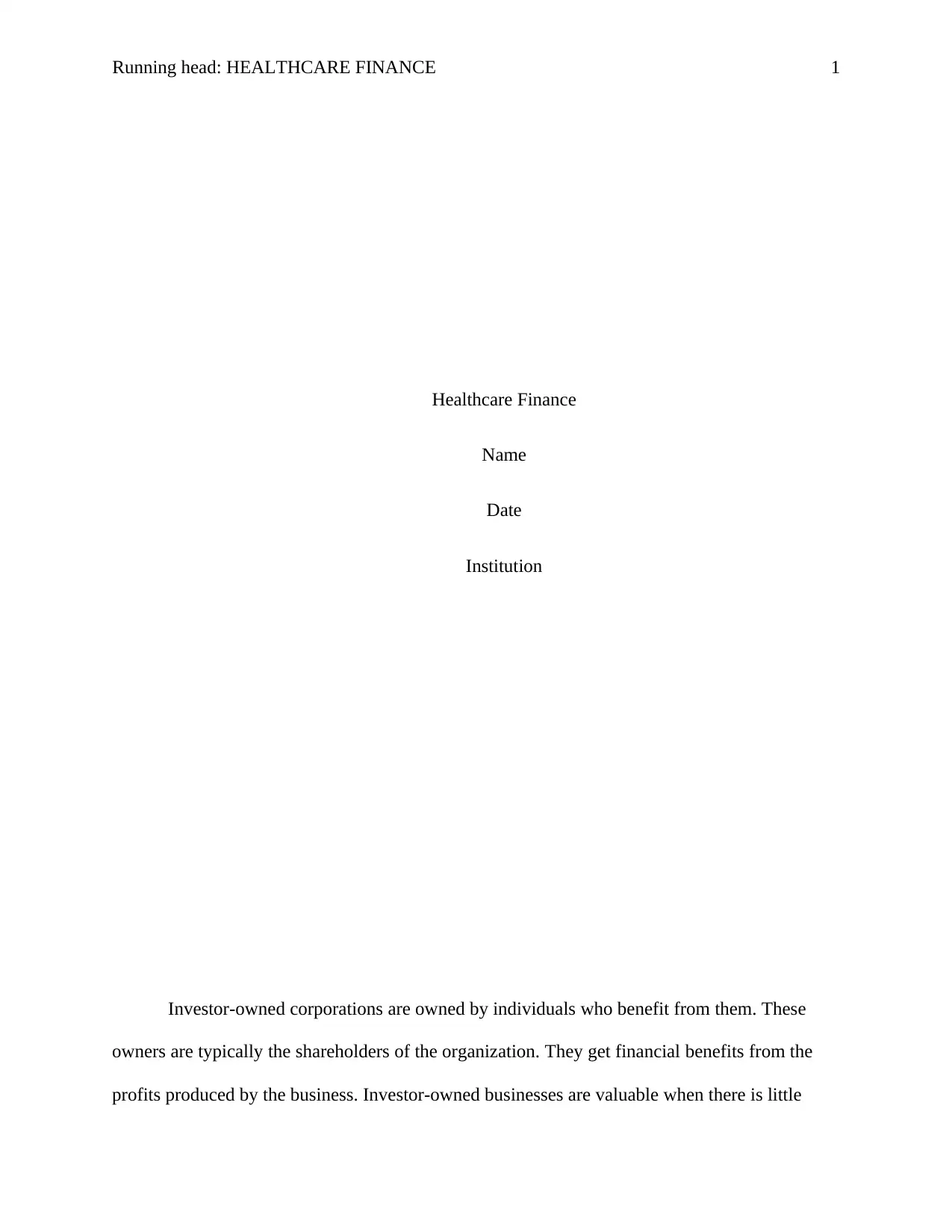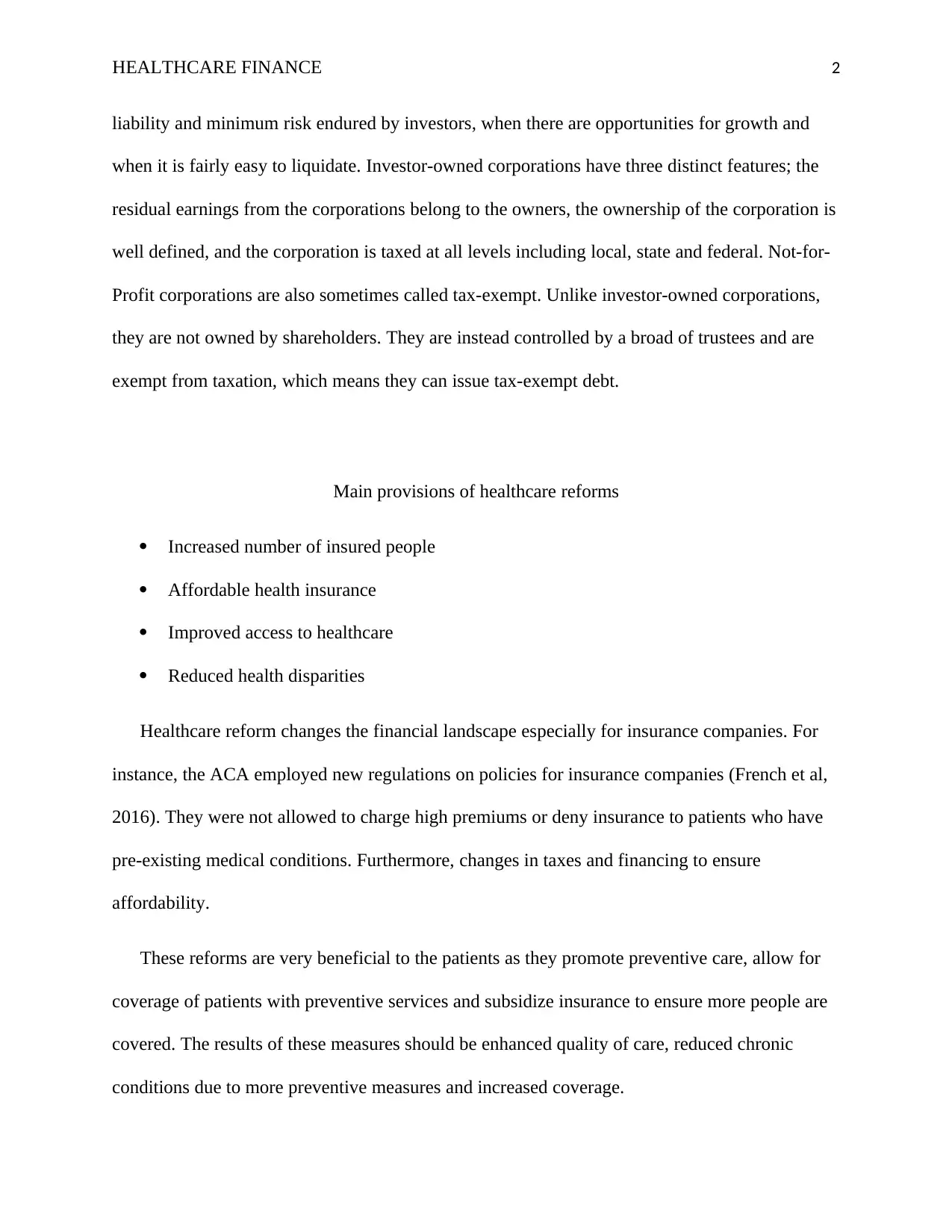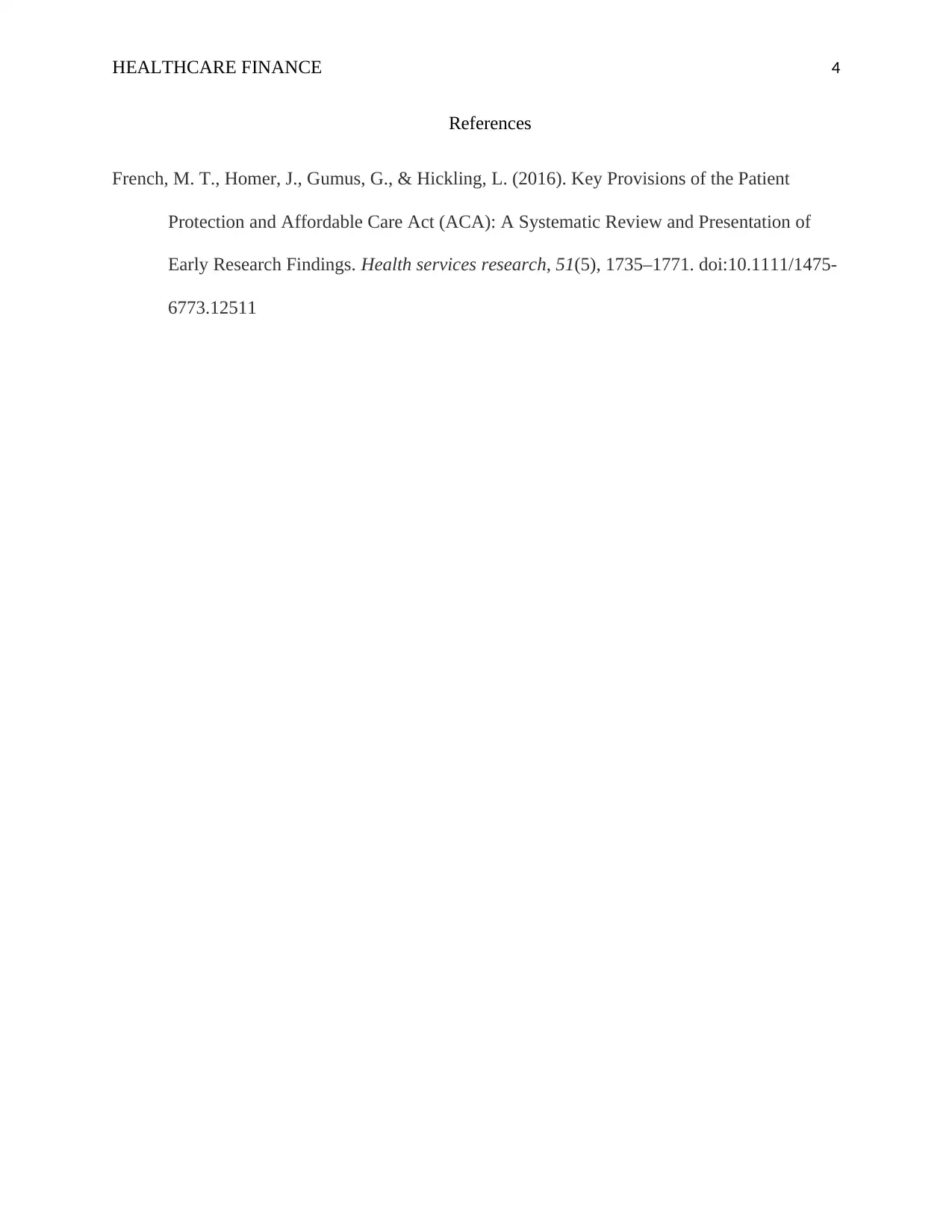Healthcare Finance: Investor-Owned, Non-Profit, and Healthcare Reform
VerifiedAdded on 2022/10/01
|4
|359
|20
Homework Assignment
AI Summary
This assignment delves into the realm of healthcare finance, contrasting investor-owned and not-for-profit corporations, and exploring the implications of healthcare reform. The solution outlines the key differences between the two types of corporations, focusing on ownership, taxation, and financial structures. It also lists the main provisions of healthcare reform, such as increased insurance coverage and subsidies. Furthermore, the assignment examines how these reforms have reshaped healthcare finance, including changes in insurance regulations and financial management. The assignment concludes by assessing the impact of healthcare reform on patients, supported by evidence from the provided sources, highlighting the benefits of preventive care and increased access to services.
1 out of 4









![[object Object]](/_next/static/media/star-bottom.7253800d.svg)